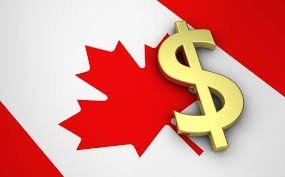
views
Economy of Canada
Canada is considered to be a developed nation. The developmental stage of a nation is determined by a number of factors including, but not limited to, economic prosperity, life expectancy, income equality, and quality of life. As a developed nation, Canada is able to provide its citizens with social services like public education, healthcare, and law enforcement. Citizens of developed nations enjoy a high standard of living and longer life expectancies than citizens of developing nations. Each year, Canada exports around $458.7 billion and imports roughly $471 billion. 6.4% of population in the country are unemployed. The total number of unemployed people in Canada is 2,365,041. In Canada, 9% of the population lives below the poverty line. The percentage of citizens living below the poverty line in Canada is low, indicating that it has a stable economy. Investors should consider Canada to be a safe location for investments and other financial ventures. Government expenditure on education is 4.9% of GDP. The Gini Index of the country is 32.1. Canada is experiencing good equality. The majority of citizens in Canada fall within a narrow range of income, although some cases may show significant differences. Canada has a Human Development Index (HDI) of 0.902. Canada has a very high HDI score. This indicates that nearly all citizens are able to attain a desirable life because of social and economic support; citizens with a low standard of living receive aid and support and have the opportunity to advance in society. The Global Peace Index (GPI) for Canada is 1.287. Due to strong law enforcement presence and high social responsibility, Canada is very safe by international standards. The strength of legal rights index for Canada is 9. Overall, it is considered to be rather strong - bancrupcy and collateral laws are able to protect the rights of borrowers and lenders quite well; credit information is abundant and easily accessible.
Currency
The currency of Canada is Canadian dollar. The plural form of the word Canadian dollar is dollars. The symbol used for this currency is $, and it is abbreviated as CAD. The Canadian dollar is divided into Cent; there are 100 in one dollar.
Credit rating
The depth of credit information index for Canada is 8, which means that information is mostly sufficient and quite detailed; accessibility is not a problem. According to the S&P credit-rating agency, Canada has a credit rating score of AAA, and the prospects of this rating are stable. According to the Fitch credit-rating agency, Canada has a credit rating score of AAA, and the prospects of this rating are stable. According to the Moody's credit-rating agency, Canada has a credit rating score of Aaa, and the prospects of this rating are stable.
Central bank
The prime lending rate of Canada's commercial banks is 3. In Canada, the institution that manages the state's currency, money supply, and interest rates is called Bank of Canada. Locally, the central bank of Canada is called Banque du Canada. The average deposit interest rate offered by local banks in Canada is 0.6%.












Comments
0 comment